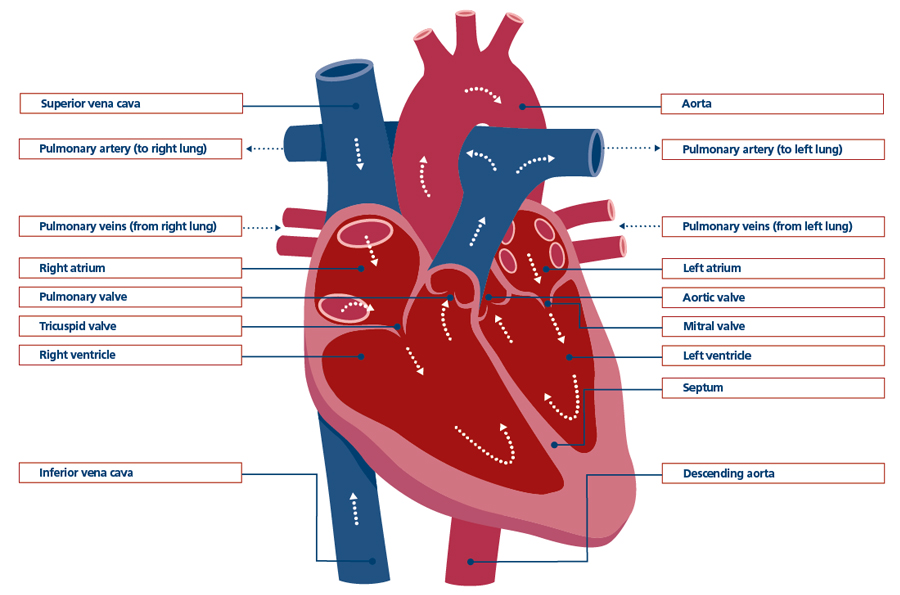
The ventricles of the heart are much thicker walled than the atria because of the extra muscle power required to pump blood. Similarly the left ventricle is much stronger than the right because it needs to drive blood around the whole body (this is known as the systemic circulation) and not just to the nearby lungs (the pulmonary circulation). Between the left and right sides of the heart resides the septum, a thick wall of muscle than makes sure oxygenated and deoxygenated blood do not mix. The valves in the heart have a similar function: much like one-way streets, they keep blood flowing in a single direction.
Did you know?
Heart rate is often referred to as the pulse, and can be detected in certain parts of the body such as the wrist and neck. It is felt because of the force of the blood moving as it is pumped by the heart around the body.
